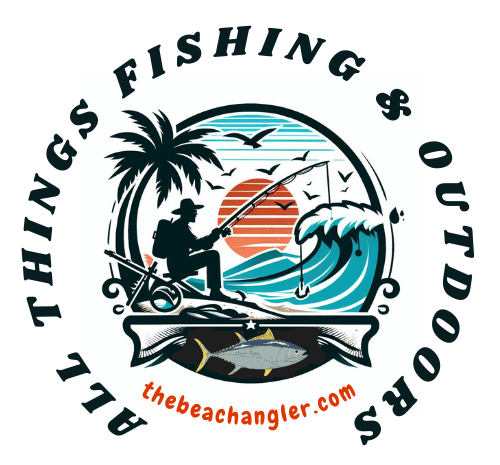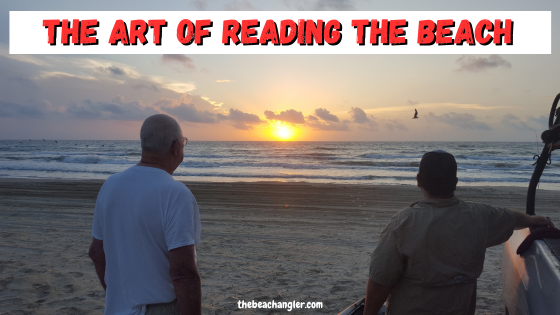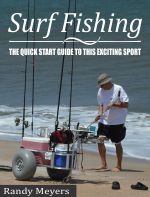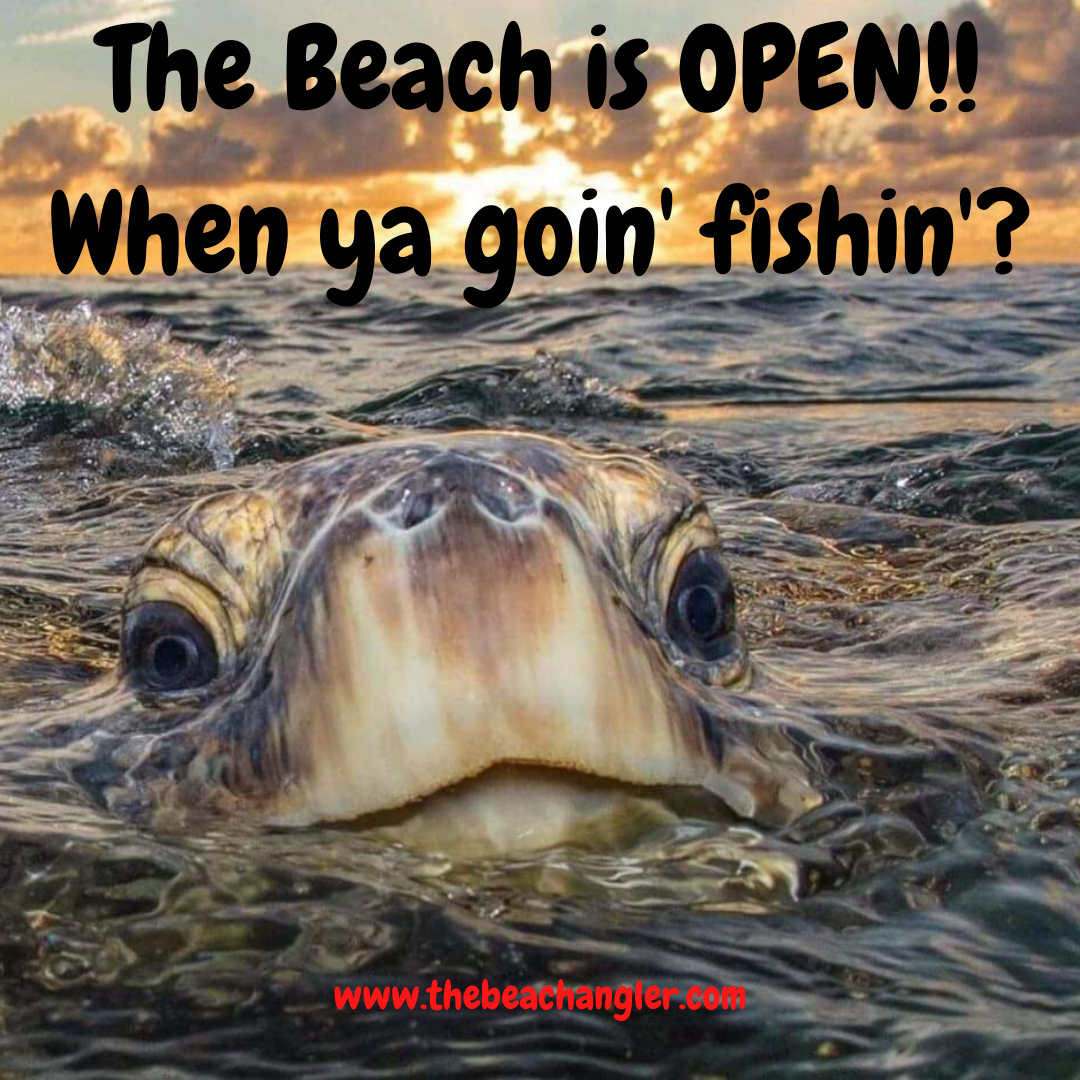Last updated on February 20th, 2024 at 05:08 pm
I’m going to let you in on a little secret: successful surf fishing isn’t just about having the right equipment or even the perfect bait. It’s also about reading the beach like a seasoned detective follows clues. That’s right, understanding the contours of the beach can be a game-changer when you’re trying to find and catch fish.
QUICK LOOK
Reading the beach for fishing is a combination of art, science, and experience. Winds, waves, and currents are constantly shifting and changing the structure of the beach. Learn to look for the sandbars, guts, rips, and points that form in the surf zone. Take notice of the slope of the beach, and the presence of shells, rocks, clams, bait fish, or feed birds. Ask the local fishermen and guides for advice. Put them all together and you will have a much greater chance of surf fishing success. Keep notes of your fishing trips and over time you will become an old salt at reading the beach.
So why are beach contours so crucial for anglers? It’s simple. The underwater landscape directs fish behavior – where they feed, take shelter, and travel. Get to know the beach’s topography, and you’ll have a sneak peek into the hidden hotspots where fish are most likely to bite.
This isn’t just about having an edge over other anglers; it’s about developing an understanding of the environment you’re fishing in. Whether you’re a casual weekend fisherman or a seasoned pro, the ability to read the beach will elevate your fishing success, and that’s what I’m here to help you with.
Ready to see the beach with new eyes? Stick with me, and by the end of this guide, detecting those previously indiscernible fish highways will become second nature to you. And trust me, there’s a lot of opportunity waiting for you along those sandy shores. Now, let’s move on and break down what beach contours are, and how they come to be.
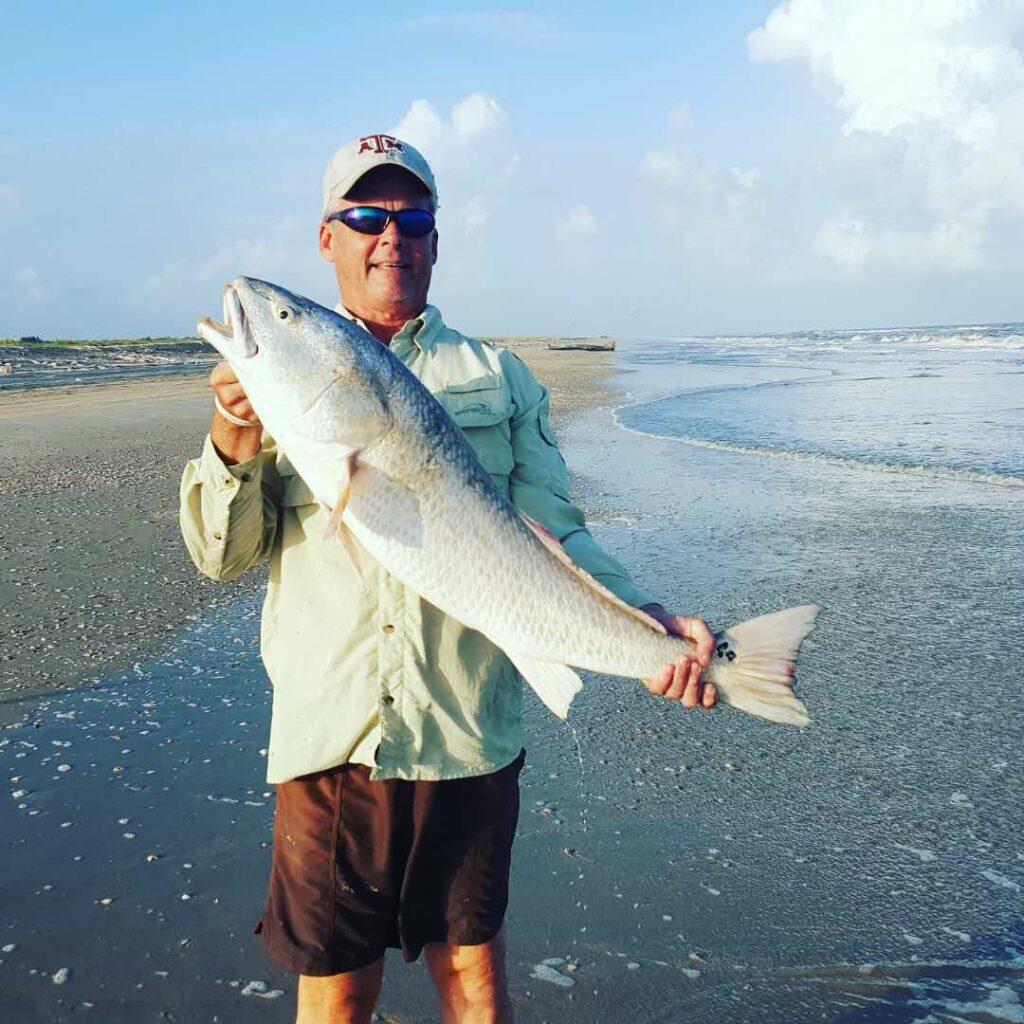
The Foundations of Reading the Beach
There’s an 80 – 20 rule in fishing. Eighty percent of the fish are found in twenty percent of the water. Learning the skills for reading the beach will help you eliminate the unproductive 80 percent and focus on the 20 percent where the fish are.
You’re going to discover the ins and outs of beach contours in this section. Beach contours are the underwater architecture of the shoreline, ever-shaped by the relentless push and pull of the waves and currents. Understanding these natural formations is crucial, as they deeply influence where fish decide to hang out and where they like to feed.
Reading the beach is different than fishing offshore or in the bay where you can pinpoint structures like wrecks, reefs, channels, and holes. The beachfront is always changing so reading the beach is more about recognizing those structures and features that are most likely to hold fish.
I’m going to guide you through the dominant forces at play here: wave action, current, and sand movement. Waves and currents are like the ocean’s conveyor belt, bringing in nutrient-rich water and moving sand around to create ridges, troughs, and channels. Being savvy about these features means knowing where fish are likely to be feeding or taking refuge.
Now, remember three key structures when surveying the beach: rips or suck-outs, guts or troughs, and sandbars. Rips are fast-moving channels that cut through the surf and often hold a treasure trove of baitfish, drawing predators.
Guts, or deeper channels between the shore and sandbars, provide prime spots for fish, especially during high tide. Sandbanks, which can form lagoons at low tide, can trap small marine creatures, setting up a fish buffet.
You see, each of these features plays a role in the daily routines of our target gamefish. By the end of this article, you’ll have a solid grasp of what to look for when you’re standing on the beach, rod in hand, planning your next move.
Tips for Reading the Beach: Equipping Yourself for the Task
I’m here to help you understand that choosing the right gear isn’t just about the fishing tackle. It’s about the tools you’ll need for reading the beach before your line ever hits the water. So let’s talk gear. A pair of polarized sunglasses is a must to reduce the glare on the water, allowing you to see below the surface.
A good pair will help you spot the underwater contours and changes in depth that can indicate where fish might be holding. A good pair of waterproof binoculars for taking a closer look at features further offshore or further down the beach.
When it comes to gauging the larger landscape, modern technology is your ally. Mobile apps, like Google Earth, OnXMaps, fishbrain, and others, offer tide charts, wind forecasts, and even topographic maps that display underwater features all from the convenience of your smartphone.
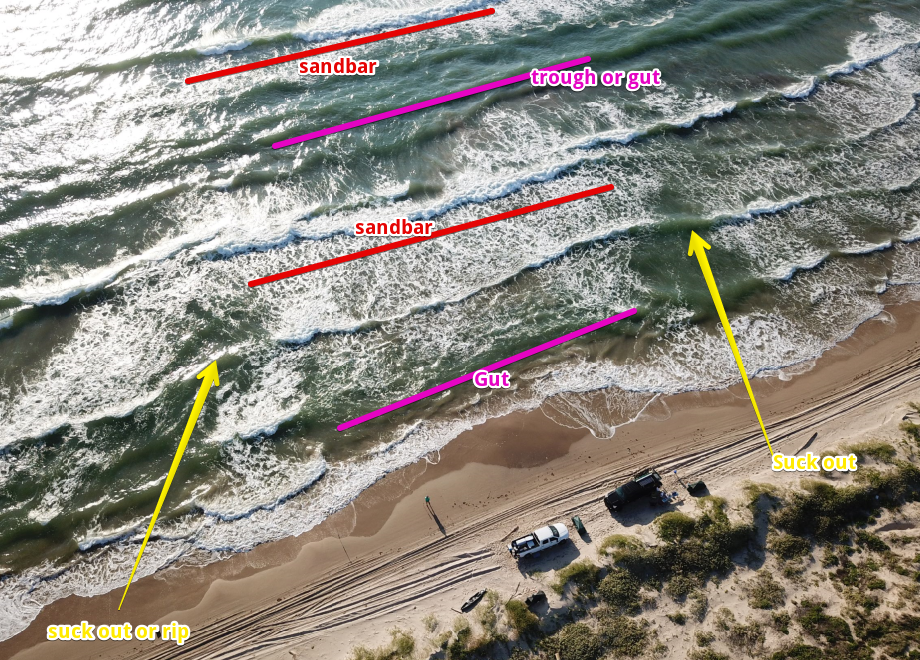
Using satellite imagery, available on many of these apps, you can preview your fishing spot from the comfort of your home. This birds-eye view can help you pinpoint rips, troughs, and possible congregation points for fish. Keep in mind that the beachfront is always changing. A windy day, strong currents or a storm can change the beach contours dramatically.
Using drones, where legal, is another great tool to give you an aerial view in real time of your potential fishing areas. Plus, in some areas, they can be used to deploy baits from the beach as well. Great tools but be sure to check with the local authorities as some areas prohibit drone use.
The point is not to find and remember locations, but to learn how to spot features and possible fishing locations when you see them so you can find them if Mother Nature moves them on you. Now, no matter how sophisticated the app or technology, there’s no replacement for getting down to the beach and seeing things for yourself.
Each visit adds to your catalog of mental notes or better yet, your written and photographic notes: like the way the wind moves the water, how current movements alter the structure of sandbars and create rips and troughs, and where natural food sources might accumulate. It’s this personal reconnaissance that often makes the difference.
Don’t worry too much about having to remember every detail on your first try. Your ability to read the beach will grow with every fishing trip, the more you observe, the better. Try to visit the beach at different tides, different seasons, and different times of day to build a comprehensive understanding of how the contours shift and change.
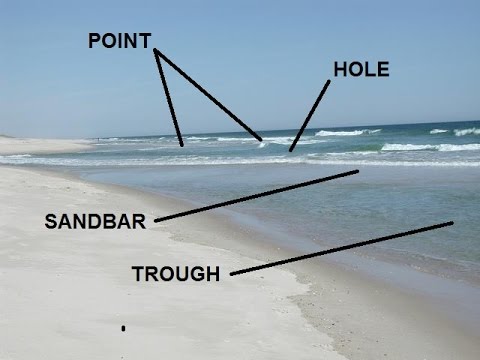
Winter, with its extremely low tides, is a great time to do some beach recon. Keep in mind that while technology and gadgets can help, don’t overlook the value of local knowledge.
Chat with seasoned fishermen, join local angling clubs or participate in online forums. The insights gained from these sources about your specific location are invaluable.
If any local guides do surf fishing trips it would be money well spent to take a trip with one and learn how they approach the beach and read the water. It can save you time and increase your knowledge as you see firsthand what to look for when reading the beach.
Keep a detailed fishing log of your surf fishing trips. List what you found, how you found it, what you saw, along with what you caught and with what baits you used. This information will help you learn what was successful and why.
The Hunter’s Strategy for Reading the Beach: Timing and Tides
Tides are the unsung heroes of shoreline fishing. Tides have an immense influence on beach contours and that can make or break your angling success. High tide, for example, brings water closer to the dunes, submerging the sandbars, and often, fish come closer to shore to feed.
The incoming tide can be a prime time for fishing as it brings in baitfish, which, in turn, attracts predators. On the other hand, low tide exposes those structures, providing a clear map of where fish might travel when the tide returns.
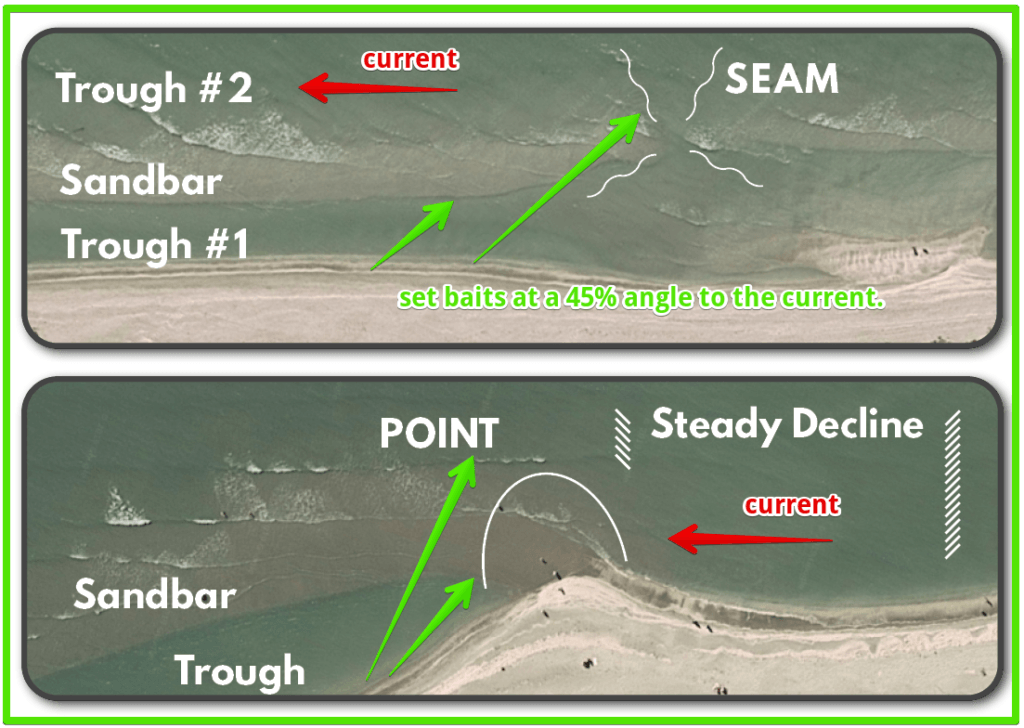
The outgoing tide pulls water through the guts and rips often dragging baitfish and other food sources out and over the sandbars triggering feeding activity. Low tide exposes sandbars, guts, and other structures and makes reading bottom features easier.
Keep in mind that the same spot can drastically change within hours. The sand is ever-shifting from the endless activities of wind, waves, and currents. So don’t worry too much about getting it perfect, because you can always adjust your approach down the road.
That great spot you found last trip may be completely different on your next trip. It’s about learning, adapting, and how to recognize the patterns of the beach and surf.
You can sometimes predict these changes by consulting a tide chart for your chosen fishing location before setting out. If you want to be precise, combine this with wind forecasts, and your past experiences to identify potential hotspots.
Your beach fishing routine should revolve around the tidal patterns. Take the time to note the changes at different stages of the tide to better predict fish movements. Keep a record in your fishing log as to what tide stage effects had on your fishing success and what beach structures you were fishing.
Now, as you’re equipped with the knowledge of timing and tides, let’s move forward to interpreting the subtle signs and signals that the beach is constantly offering to the observant angler.
Interpreting Signs and Signals when Reading the Beach
Imagine the beach as a map, where certain signs can lead you to the best fishing spots. Let’s take a look at how some of the subtle, yet telltale signs can signal where fish are likely to be feeding.
First up, observing the water’s surface. Ripples, foam, and changes in water color often indicate underwater structures where fish congregate. Darker colors usually mean deeper water or troughs, which can be prime spots for fish. Breaking waves indicate shallower water usually associated with sandbars.
Observe the slope of the beach. A steep slope often indicates deeper guts closer to shore. Look for points that jut out into the surf. These points offer pinch points that block guts and are often used as ambush points for predators.
Look for shells, clams, crabs, and baitfish in the shallows along the beach. Any signs of bait or food are a good sign for a potential fishing location. If there is bait or forage around, gamefish and other predator species will likely be around as well.
Bird activity is another giveaway. Seabirds often hover over areas where fish are close to the surface, so keeping an eye on our feathered friends can lead you to action-packed waters. Diving birds mean they are feeding on bait and likely fish are feeding on it as well. Be sure to take note of the beach structures that they are feeding over.
Keep in mind that the ability to interpret these clues to how to read the beach is the trademark of a seasoned beach fisherman. And guess what? You can become one of them with a bit of practice and patience.
Frequently Asked Questions: Reading the Beach for Fishing
The following are some common questions I’ve come across that every beach angler is itching to get answers for. You’re going to find out about identifying hotspots, understanding rips, and the best tides for beach fishing. Let’s get right into it.

So, how can you identify a good fishing spot on the beach?
Good question. Look for areas where waves break differently, indicating a change in depth or the presence of a sandbar. Birds diving into the water are often a tell-tale sign of baitfish, which attract predators – AKA, your target fish. Also, keep an eye out for darker patches of water; these could be deeper gutters where fish like to hang out.
Now what is a ‘rip’?
A rip is a strong current moving away from the shore. Recognizing a rip can be a game-changer. It appears as an area of choppier water, with fewer breaking waves, often a pathway for fish moving in for an easy meal. Rip currents are characterized by darker, deeper water. Fish may be drawn to these areas as they can find food being carried along with the current. Casting into or near a rip can be highly productive.
Is it better to fish at high tide or low tide when beach fishing?
In my experience, either can be fruitful, but it often depends on the beach’s contour. Fish are often more active during tidal changes. Fishing during incoming or outgoing tides can be more productive. High tide brings fish closer to shore, but low tide can expose gutters and channels that concentrate fish. Always observe the beach at different tides before deciding.
What is the significance of sandbars for beach fishing?
Sandbars create troughs and deeper channels where fish often swim. Casting near these structures can improve your chances of a catch.
How can I interpret bird activity for fishing success?
Birds, especially diving seabirds, can indicate the presence of baitfish and larger predatory fish below. Pay attention to their behavior. Areas with Circling and diving birds are great places to try fishing.
How do weather conditions affect beach structure?
Weather conditions can indeed affect beach contours and fishing success. Strong winds can alter underwater sandbars and lead to the formation or disappearance of guts. Always take note of the weather patterns. A change in weather can mean a change in strategy.
Remember to Practice Preservation and Conservation
Ok, so now You’ve learned the ropes of reading the beach and how it can affect your fishing success. But this isn’t just about boosting your catch rate; it’s also about safeguarding the very environment that makes these experiences possible.
Beaches are dynamic, living spaces, critical not only for fish but for countless organisms. As beach anglers, adopting a catch-and-release mentality where possible not only extends the sport’s longevity but protects the species for future generations of anglers.
When you’re out there, GPS and tackle in hand, looking for the perfect trough or sandbar, consider the mark you leave behind. Get involved in local conservation efforts. For example, help out with local beach clean-up events, and take a kid fishing events.
Always check your local regulations and respect fishing and beach closures. They’re there to ensure that the beaches and their inhabitants thrive, so future generations can enjoy the same thrill we do. And you will avoid the unpleasant experience of a citation from the local Fish & Wildlife officers.
So, are you ready to start learning the art of reading the beach not just as a path to a great catch, but as a commitment to conservation? With the knowledge you’ll gain, you’ll have the opportunity to make every fishing trip both successful and sustainable.

As always, stay safe, enjoy the journey and please try to leave it cleaner than you found it. If you have any comments, questions, ideas, or suggestions please leave them in the comment section below and I’ll get back to you ASAP. You can follow us on Facebook: Rex The Beach Angler, Instagram: thebeachangler7, Twitter: @AnglerBeach, and YouTube: Man Art Creations.
P.S. – Thanks so much for checking out our blog we really appreciate it. Just so you know, we may receive a commission if you click on some of the links that appear on our site. This helps us keep our content free and up-to-date for everyone. We appreciate your support!
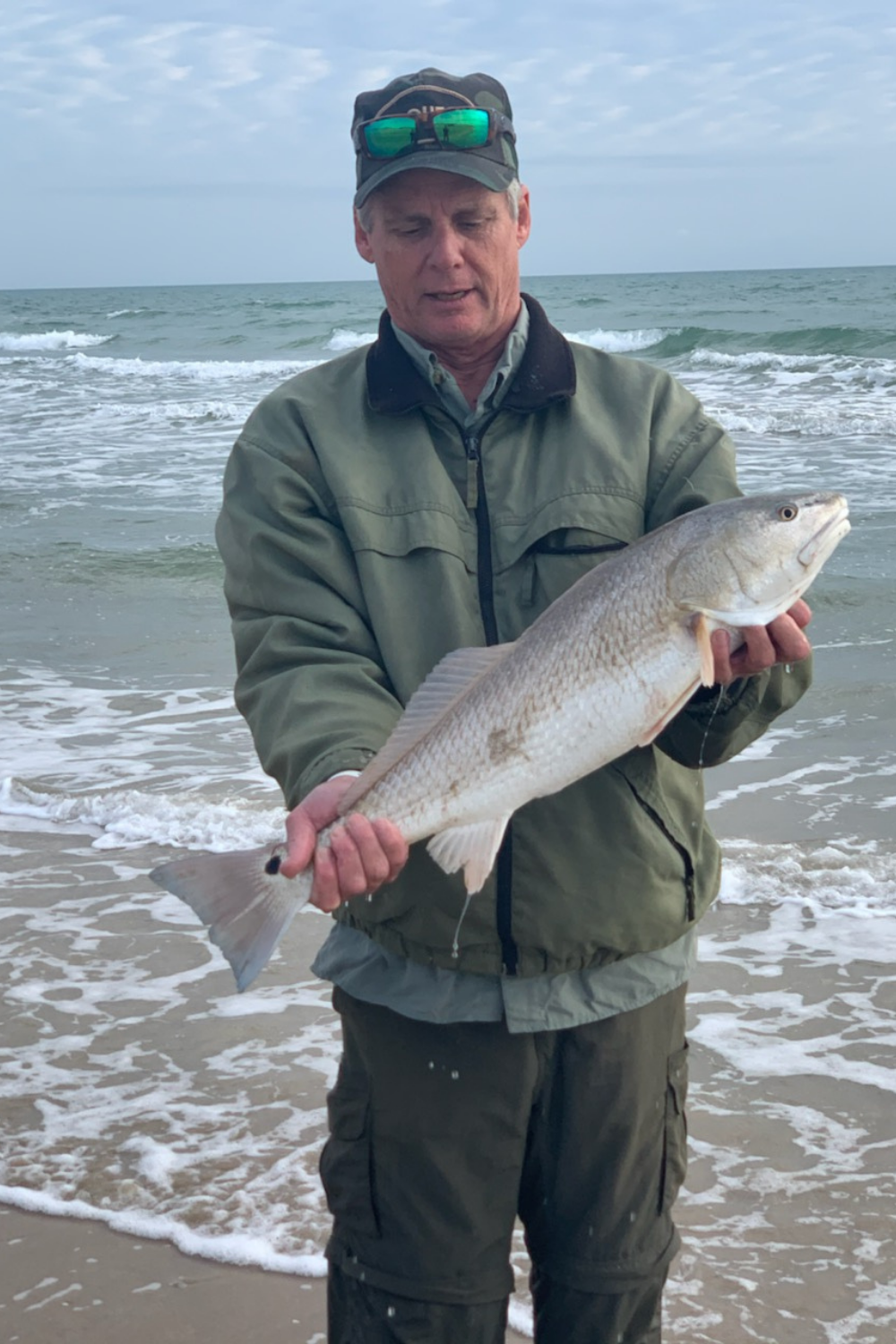
A life long surf fisherman with 50+ years of experience, I am also an avid hunter and outdoorsman. I will be sharing my passion for the outdoors with you so be prepared for hunting, fishing, camping, hiking and more. Along with gear reviews and the latest trends and innovations in the outdoor industry.
